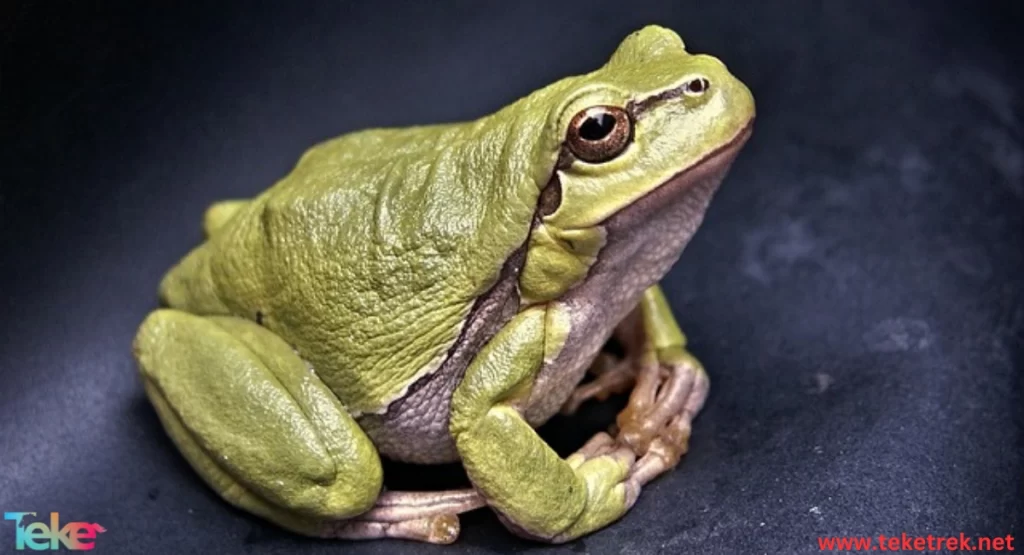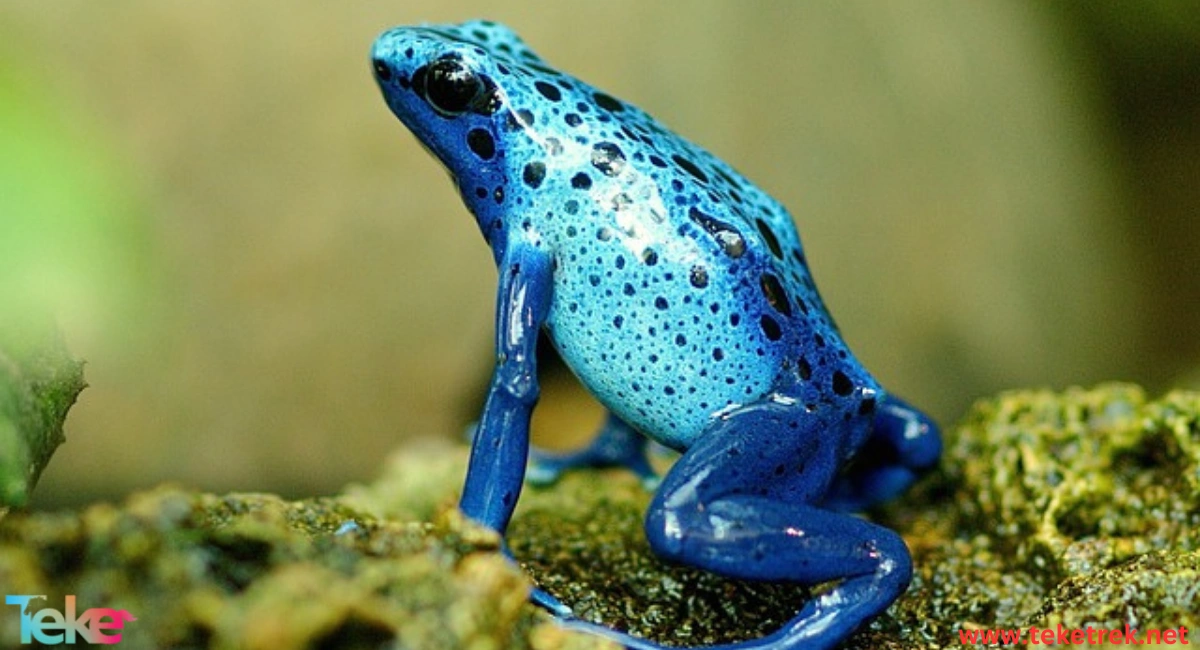Amphibians have distinguished themselves with characteristics that have helped them adapt to various environments, and they are of great importance in the ecosystem.
Below, we’ll review a detailed explanation about them on the Teketrek website. We will present their definition, characteristics, and their reproduction methods.

An overview of amphibians
Amphibians, in the classification of animals, are a group of vertebrates that share the ability to adapt to various climates, including both land and water, but they prefer to live in moist environments to protect their bodies and skin from drying out.
You can find them in seas, oceans, or even near freshwater, in different parts of the world except for the polar continent. However, they may spend part of their life cycle in water, perhaps reproducing in water. Additionally, they may return from land to water after completing their growth cycle.
Furthermore, amphibians can adapt to various temperatures, whether high or low.
Types of amphibians
Amphibians encompass approximately 7,500 species, which manifest as follows:
- Tailless amphibians
The largest division of amphibians, possess four limbs but lack a tail, for example:
Frogs and toads: They are characterized by having four legs, with the front legs shorter than the hind legs, which helps the animal to leap from place to place. They often live in or around water, but they can also be found on land.
- Tailed amphibians
They have slender bodies with long tails and live on land, moving to water to lay eggs during reproduction, for example:
Salamanders: This group includes about 550 species distributed in both aquatic and terrestrial habitats. They can grow up to one and a half meters in length. Characterized by their slender body and long tails, they can be found on various continents except Australia.
- Legless amphibians.
They have short tails resembling snakes and worms and are found in moist areas or among rocks. They are the least widespread species, for example:
Caecilians: They live in the sea and resemble terrestrial worms, lacking legs. There are around 150 species, with some found in moist areas and others in rocks and valleys.
Physical characteristics of amphibians
Amphibians possess a set of physical characteristics that help them adapt to various environments, including:
1. They have four limbs that aid in swimming in water or walking on land, with some having tails like lizards.
2. They have moist skin that assists in absorbing dissolved oxygen from water during swimming. Additionally, they are capable of retaining water when out of it. They tend to stay near water due to their constant need for it.
3. Amphibians are typically small in size, weighing around 60 grams, although some, like salamanders, can be larger.
Behavioral characteristics of amphibians
Amphibians possess several behavioral and physiological characteristics, including:
1. They are ectothermic animals, meaning their body temperature varies depending on their surroundings. This is due to their inability to internally regulate body temperature, so they warm their bodies in the heat and cool them in the shade.
2. Amphibians are carnivorous animals, preying on small organisms and helping control agricultural pests. Additionally, larger amphibians like the American bullfrog can even prey on larger animals such as snakes.
3. Their skin contains toxic glands that play a role in protection and help maintain moisture through the mucus secreted by these glands.
4. Amphibians have strong vision, with eyelids, glands, and ducts connected to them, as well as muscles that help position the eyes in the head. They have high sensitivity to colors due to the presence of four light receptors in the retina.
5. They have a sophisticated auditory system that adapts to different environments, known as the amphibian papilla. It consists of sensory tissues with high sensitivity to low-frequency sounds.
How do amphibians breathe?
Amphibians breathe while swimming or diving through their skin, where the moist, thick skin absorbs oxygen dissolved in the water. They also retain water after leaving it.
On the other hand, reptiles breathe pulmonary through their throat and mouth during their time on land.

How do amphibians reproduce?
Amphibians live the early stages of their lives in water, breathing through gills that later transform into lungs as they mature. Therefore, most prefer to spend their adult lives on land, returning to water only for breeding.
They reproduce during the rainy season, with their eggs covered in a gel-like substance. After hatching, the larvae emerge into the water, where they feed on plants, algae, or even small aquatic animals.
The larvae take several months to complete their growth, during which their limbs develop, their eyes change, and their digestive system adapts to life on land. The life cycle of amphibians can be summarized into several stages, which we will discuss in the following paragraph.
The life cycle of amphibians
The life cycle of amphibians begins with egg laying and formation, ending with maturity and full growth, as follows:
First, is the egg-laying stage, where amphibians lay their eggs in water and care for them until they hatch.
Second, is the aquatic stage, where amphibians spend their early stages of life in water, either temporarily until they can live on land or permanently like fish.
Third, the feeding stage of the young, where the early stages of life feed on algae, but they may also be carnivorous like salamanders.
Fourth, the completion of the growth stage, after a period of care ranging from several weeks to months, the amphibian matures, losing its gills and developing lungs to aid breathing on both land and water.
Fifth, the transition to the land stage, where the young move to live on land to complete their growth.
Fascinating facts about amphibians
Some important facts about amphibians that we may overlook:
1. Amphibians play a role in maintaining ecological balance as they feed on human-damaging insects and protect crops from damage by consuming harmful organisms.
2. Amphibians have toxic skin due to the production of poisonous chemicals. Additionally, their bright, shiny colors serve as a protective mechanism against predators.
3. Amphibians have long, sticky tongues that help them attract and capture prey.
4. Amphibians use camouflage to hide from their predators such as birds and snakes.
5. Some amphibians, like salamanders and newts, capture prey using their venom.
6. Frogs do not chew their food; they swallow it whole.
7. Amphibians only secrete toxins as a defense mechanism.
8. Amphibian eggs do not have a hard shell, so they lay them in water to protect them from drying out.
common questions
Some common questions about amphibians:
1. Are amphibians carnivorous or herbivorous?
Amphibians are carnivorous animals that feed on insects, algae, and some small vertebrates.
2. How do amphibians reproduce?
Amphibians reproduce sexually, with females laying eggs in water to protect them from drying out due to their lack of a hard shell. There are various methods for attracting mates during mating seasons.
3. What is the largest amphibian?
The Chinese giant salamander is the largest amphibian, reaching lengths of up to 5 feet and weights of up to 9 inches.
4. Where do amphibians live?
Amphibians adapt to living in various habitats, including:
- Wetlands: These are their preferred habitats, such as ponds and marshes.
- Tropical regions: They rely on moisture from tropical rains.
- Dry areas: Some adapt to living in dry regions, hiding under rocks during periods of heat and emerging when it rains, often found near ponds and marshes.
Briefly, Amphibians are animals adapted to living both on land and in water. They are carnivorous creatures that feed on algae and small vertebrates.





